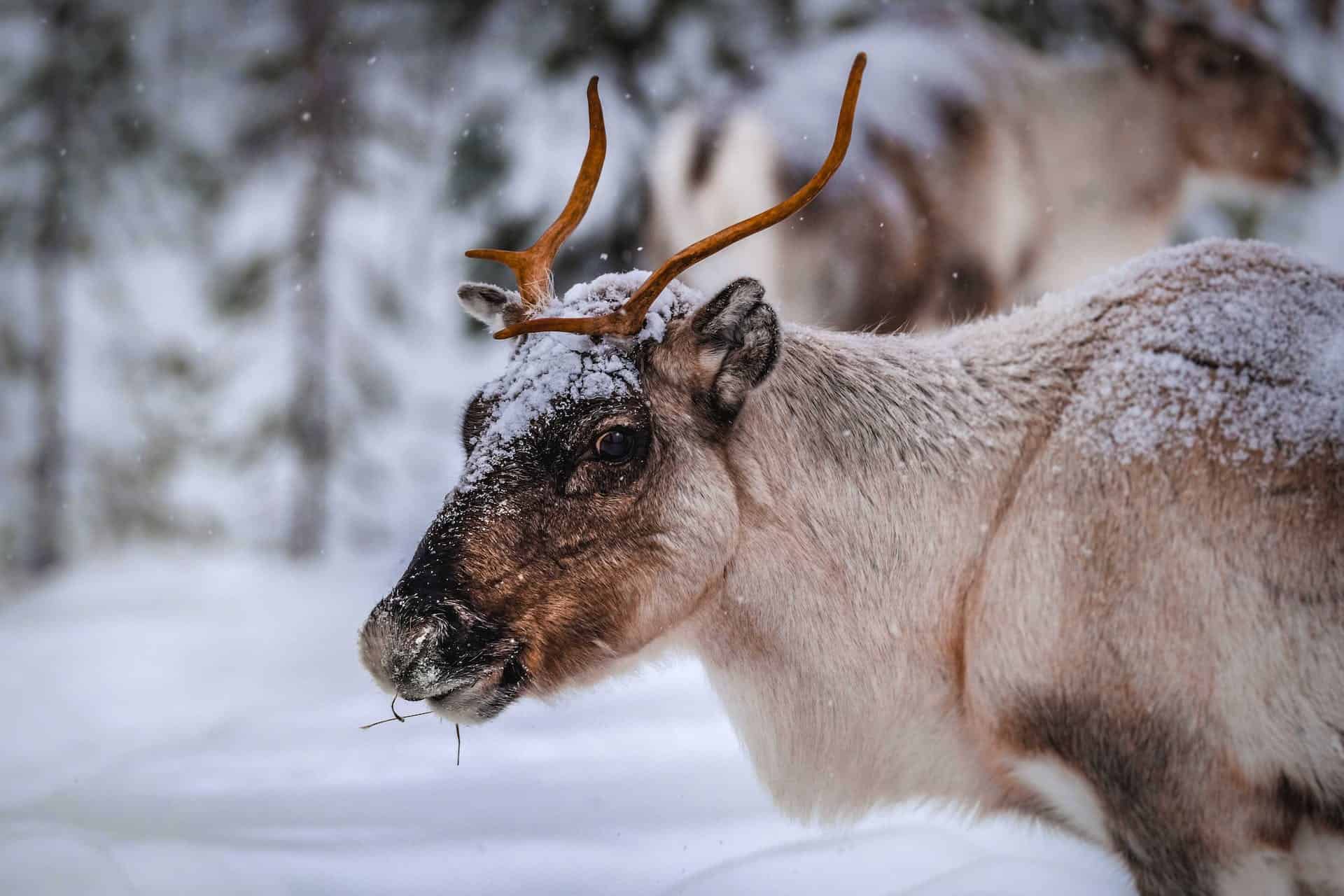Over 90 years ago, Robert May wrote the story of Rudolph the red-nosed reindeer, who saved Christmas by leading Santa’s sleigh through a dark night. While fictional, the story had a point — reindeer have a secret superpower. A new study found they might have developed specialized eyes that can detect their favorite food amidst the dark and snowy Arctic winter.

The findings shed light on the long-standing enigma as to why reindeer can see light in the ultraviolet spectrum. “Reindeer are so cool, but many people think about them only at Christmas. Now is a good time to alert people to their extraordinary visual system,” Nathaniel Dominy, first author of the study and the Charles Hansen Professor of Anthropology at Dartmouth College, said in a news release.
Reindeer mainly rely on reindeer moss, or Cladonia rangiferina, for food — although it’s not a moss but rather a combination of algae and fungus called lichen. C. rangiferina forms dense, crunchy carpets in northern latitudes and its name is derived from the scientific term for reindeer, Rangifer, underscoring its integral role in their sustenance.
Dominy and a team of researchers at Dartmouth College and the University of St. Andrews in Scotland worked in the Scottish Highlands, which are home to UK’s only reindeer herd — reintroduced from Scandinavia after being hunted to extinction locally — and over 1,500 species of lichen. Despite the variety, reindeer in the Highlands chose to eat C. rangiferina during the winter.
Reindeer vision
Against the Arctic landscape, the white lichen eludes the human eye, blending into the snowy backdrop. But the researchers found that C. rangiferina and a few other lichen species absorb UV light. Analysis of spectral data from the lichen and light filters showed that these organisms appear to reindeer as dark patches amidst a vivid landscape, enhancing their visibility.
“If you can put yourself in their hooves looking at this white landscape, you would want a direct route to your food,” Dominy Said in a news release. “Reindeer don’t want to waste energy wandering around searching for food in a cold, barren environment. If they can see lichens from a distance, that gives them a big advantage, letting them conserve precious calories.”
Previous studies have shown that reindeer eyes undergo a seasonal change between summer and winter. In winter, their tapetum, the light-enhancing membrane responsible for the “shiny” eyes seen in many animals, shifts from the typical golden hue to a vibrant blue. This transformation is believed to enhance their vision in the low light conditions of the polar winter.
“If the color of the light in the environment is primarily blue, then it makes sense for the eye to enhance the color blue to make sure a reindeer’s photoreceptors are maximizing those wavelengths,” Dominy said.
However, the blue tapetum allows as much as 60% of UV light to reach the eye’s color sensors. This implies that reindeer see the winter landscape as a shade of purple, resembling how a person would perceive a room illuminated by a black light. Surfaces that reflect UV, such as snow, appear illuminated, while UV-absorbing surfaces contrast sharply as areas of darkness.
In their study, the researchers describe the quest of scientists to unravel the mystery of why the eyes of an Arctic creature, active during daylight, would develop to be sensitive to the UV light reflecting from every snow-covered surface. However, their study indicates that the answer lies in what UV light doesn’t reflect from — specifically, C. rangiferina and other dense lichens.
It’s possible then that the reindeer’s eyes are optimized to single out this unique lichen at the time of the year it would be most difficult to find. So, while Rudolph’s red nose may be lighting the way for Santa to see by, as Robert May’s story reads, it’s actually Rudolph’s blue “eyes that allow him to find dinner after a long Christmas season,” the researchers write.
The study was published in the journal i-Perception.


